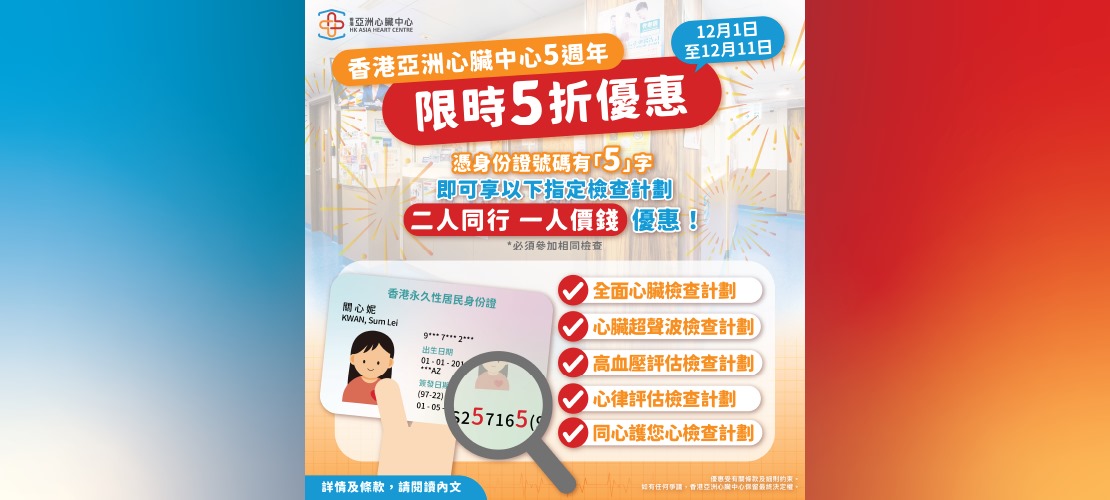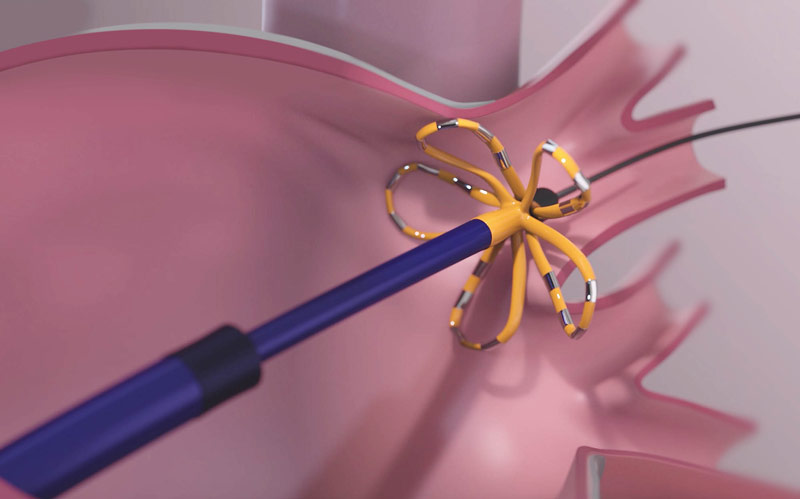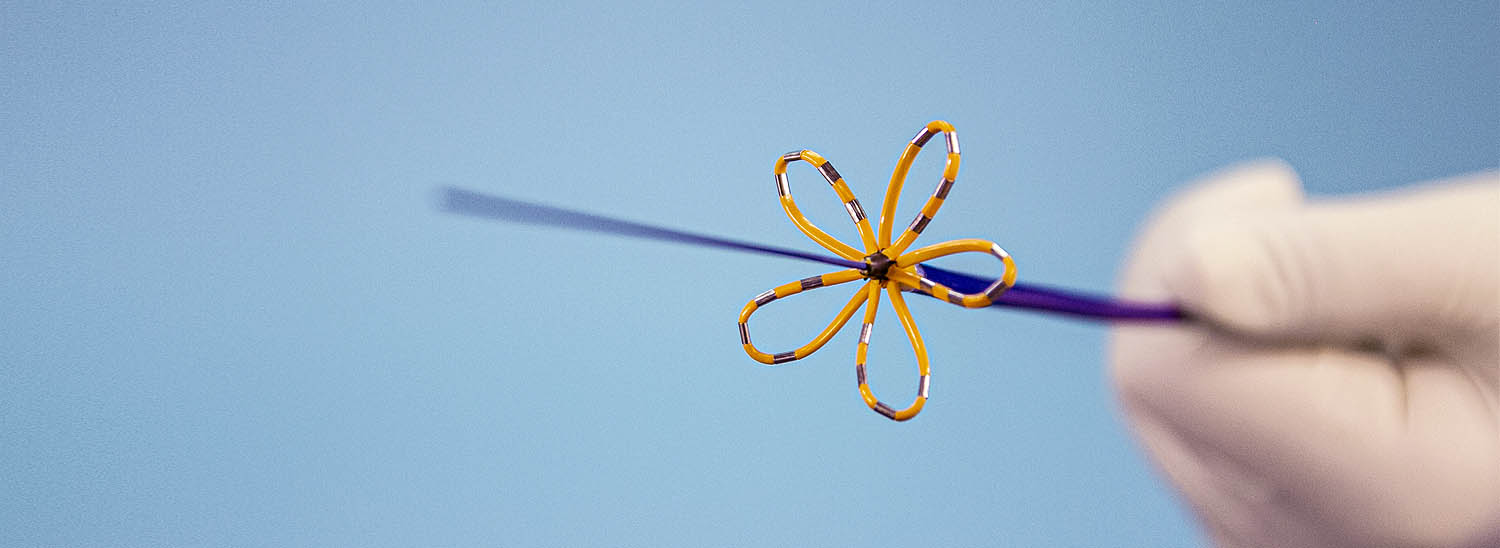Atrial Fibrillation (AF) Pulsed Field Ablation (PFA) | Hong Kong Asia Heart Centre
Atrial fibrillation is a common heart rhythm disorder in which patients typically experience an irregular, extremely fast heart rhythm. Here there are the three types:
Paroxysmal: last for not more than 7 days, usually within 24 hours
Persistent: last for longer than 7 days
Permanent: last for more than a year
It is estimated that about 1% of the people in Hong Kong suffer from atrial fibrillation. Based on the current population of about 7 million, that is, more than 70,000 people. Atrial fibrillation may not lead to immediate death, but it is an important chronic disease and leading to severe complications:
‧5 times higher in risk of stroke
‧3 times higher in risk of heart failure
‧About 70% higher in risk of heart attack
‧About 40% higher in risk of dementia
‧About 4 times higher in risk of death
Pulsed field ablation releases a series of high-amplitude electrical field lasting for several microseconds to the target tissue. Strong electric field will make irreparable electrical pores in cell membrane, and the contents of the cell will flow out slowly, finally the cell is destroyed.
Pulsed Field Ablation has been approved by the U.S. Food and Drug Administration (FDA) and can be used in patients with persistent or permanent atrial fibrillation. Our center is the first private hospital in Hong Kong to introduce this technology. As the instrument was available in February 2023 , it has been officially put into service.
Compared with other ablation techniques, pulse field ablation is easier to operate, and it only takes about 3 minutes to complete the isolation of a pulmonary vein, so the procedure time is shorter and use of anesthetic medication can be minimized.
Proccess:
- This invasive procedure is generally performed in the Cardiac Catheterization & Intervention Laboratory (CCIL). You may undergo general Anesthesia (GA) or Monitored Anesthesia Care (MAC).
- Electrodes are adhered to the chest to monitor the heart rate and rhythm. Blood oxygen monitor through your fingertip will be set up. Measurement of blood pressure from your arm will be taken during the examination.
- Small wounds are made over the groin for access to veins.
- Electrical Field energy will be delivered to the target site as ablation to destory abnormal cells.
- The duration of the procedure could last around 3 hours.
- You will be sent to the ward for observation for another 12-24 hours.
After Procedure:
- Usually you can be discharged 1 day after the procedure.
- The wound will be inspected and covered with light dressing. Please keep the wound site clean and change dressing if wet. In general, showers are allowed after 2 days.
- Please avoid vigorous activities (household or exercise) in the first 7 days after the procedure.
- Bruising around the wound site is common and usually subsides 2-3 weeks later. If you notice any signs of bleeding, infection, increase in swelling or pain over the wound, please come back to the hospital or visit a nearby Accident and Emergency Department immediately.
- During subsequent follow-up, our medical staff will explain to you the results of the procedure and discuss on any subsequent plan of management. You are advised to ask your close relatives to join the interview.
Atrial fibrillation is a common heart rhythm disorder in which patients typically experience an irregular, extremely fast heart rhythm. Here there are the three types:
Paroxysmal: last for not more than 7 days, usually within 24 hours
Persistent: last for longer than 7 days
Permanent: last for more than a year
It is estimated that about 1% of the people in Hong Kong suffer from atrial fibrillation. Based on the current population of about 7 million, that is, more than 70,000 people. Atrial fibrillation may not lead to immediate death, but it is an important chronic disease and leading to severe complications:
‧5 times higher in risk of stroke
‧3 times higher in risk of heart failure
‧About 70% higher in risk of heart attack
‧About 40% higher in risk of dementia
‧About 4 times higher in risk of death
Pulsed field ablation releases a series of high-amplitude electrical field lasting for several microseconds to the target tissue. Strong electric field will make irreparable electrical pores in cell membrane, and the contents of the cell will flow out slowly, finally the cell is destroyed.
Pulsed Field Ablation has been approved by the U.S. Food and Drug Administration (FDA) and can be used in patients with persistent or permanent atrial fibrillation. Our center is the first private hospital in Hong Kong to introduce this technology. As the instrument was available in February 2023 , it has been officially put into service.
Compared with other ablation techniques, pulse field ablation is easier to operate, and it only takes about 3 minutes to complete the isolation of a pulmonary vein, so the procedure time is shorter and use of anesthetic medication can be minimized.
Proccess:
- This invasive procedure is generally performed in the Cardiac Catheterization & Intervention Laboratory (CCIL). You may undergo general Anesthesia (GA) or Monitored Anesthesia Care (MAC).
- Electrodes are adhered to the chest to monitor the heart rate and rhythm. Blood oxygen monitor through your fingertip will be set up. Measurement of blood pressure from your arm will be taken during the examination.
- Small wounds are made over the groin for access to veins.
- Electrical Field energy will be delivered to the target site as ablation to destory abnormal cells.
- The duration of the procedure could last around 3 hours.
- You will be sent to the ward for observation for another 12-24 hours.
After Procedure:
- Usually you can be discharged 1 day after the procedure.
- The wound will be inspected and covered with light dressing. Please keep the wound site clean and change dressing if wet. In general, showers are allowed after 2 days.
- Please avoid vigorous activities (household or exercise) in the first 7 days after the procedure.
- Bruising around the wound site is common and usually subsides 2-3 weeks later. If you notice any signs of bleeding, infection, increase in swelling or pain over the wound, please come back to the hospital or visit a nearby Accident and Emergency Department immediately.
- During subsequent follow-up, our medical staff will explain to you the results of the procedure and discuss on any subsequent plan of management. You are advised to ask your close relatives to join the interview.



